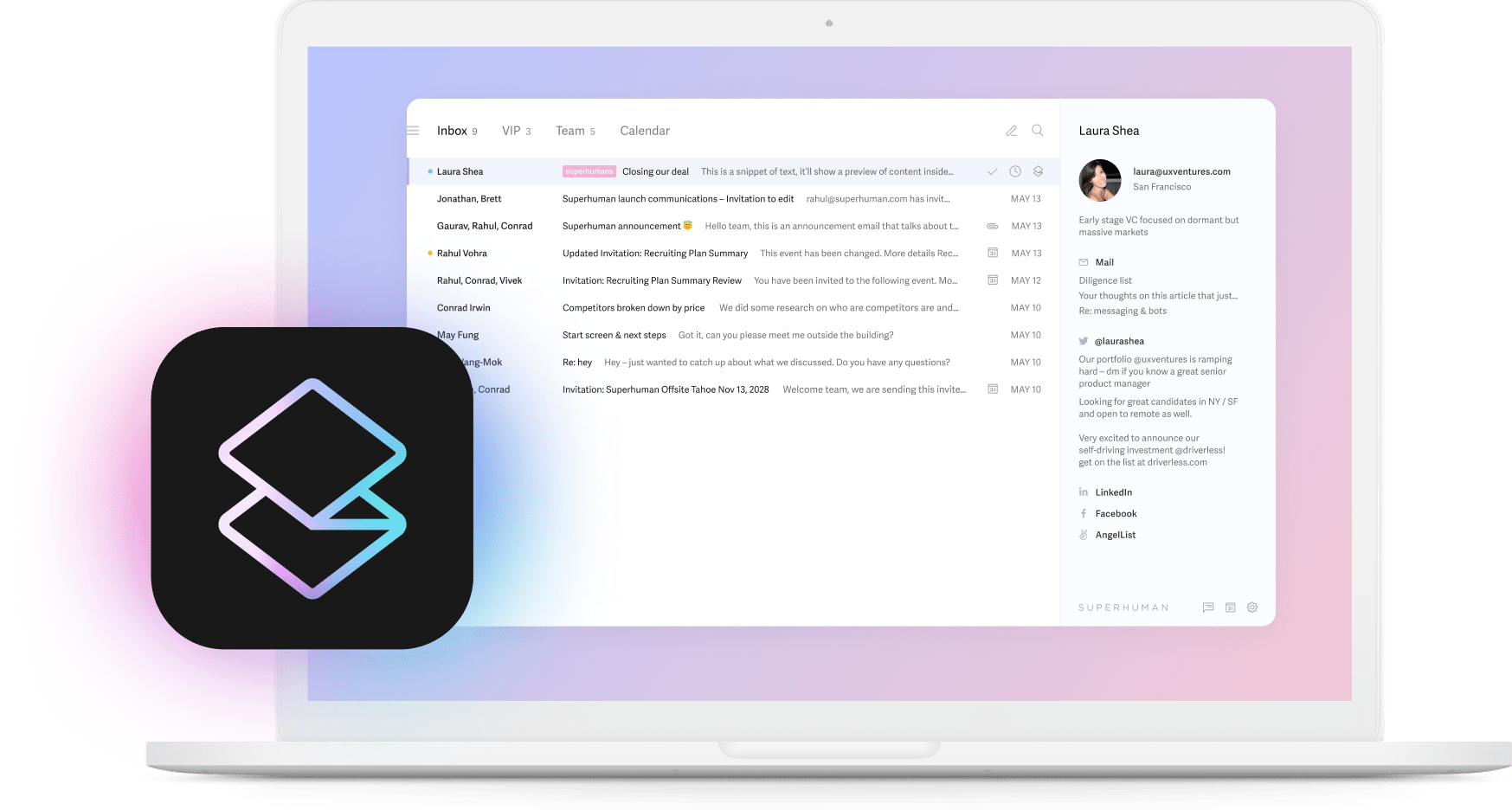
At work, you're constantly sending and receiving emails. Our inboxes get so busy that it's no wonder we sometimes need to follow up with a friendly nudge or reminder.
In this article, we'll cover the best practices for follow-up emails. Read on to find out how to make your messages clear and boost your chances of receiving a response.
How to time your follow-up message
It's important to time your message just right. Two things to consider are how long it's been since your previous email was sent and what time of day you should send your follow-up.
Most people are pretty busy. It can be hard to designate time in your day to respond to every message — your recipient likely feels the same way. With so much noise in our inboxes, it's very easy for an email to slip through the cracks.
Context matters when considering timing. For situations like a job interview follow-up, it might be best to wait a week before checking in again. Time-sensitive issues like contracts or bookings can justify a follow-up after just a few hours.
As for what time to send an email, stick to weekdays. One of the best times to engage over email is between 9 a.m. and 11 a.m. on business days. Other great options are from 1 p.m. to 2 p.m. and 5 p.m. to 6 p.m.
What are the best follow-up email subject lines?
A subject line could be the reason your email is not getting opened. If you've sent other initial emails with similar subject lines — and experienced success — this may not be the issue. Otherwise, a follow-up to your last email with a better subject line can be a game-changer.
Your subject line should engage the recipient and add value to your last correspondence. If you're in sales, including discounts and limited-time offers in your subject line is a great way to pique their interest. Additionally, a personalized subject line could show the recipient that you plan to give them your full attention.
What are other best practices for follow-up emails?
Keep your email clear and concise, and make sure you follow proper email etiquette. Let them know why you're reaching out and what action you expect them to take — this is known as a call -to-action (CTA). A clear CTA will encourage the recipient to take the action you requested, such as clicking on the link you've provided or replying with details.
Additionally, be sure to proofread your message after you write it. Review your email for grammatical errors, make sure your intentions are clear, and put yourself in the recipient's shoes to see if you would engage with your message. Make edits as needed and trim it down to the essential details.
What are the best follow-up email templates?
To give you the best shot at getting a response, we've crafted some simple and effective templates that you can use in various situations — you can. modify and personalize them to fit your needs.
After a meeting
A great opportunity to send a follow-up message is after you meet someone for the first time. You could have met in person, on a video conferencing tool, or online via social media. Whatever the case may be, here's a follow-up email example:
Subject line:
Hi [name], it was a pleasure to meet you!
Body:
Thank you for taking the time to speak with me the other day. I wanted to connect and see if [purpose of continuing the conversation]. From what I've seen on your company's [LinkedIn, website, etc.], I believe there are opportunities we can explore.
Here's a link to my calendar [or other call to action] to connect.
Best regards,
[Your name], [job title] at [company name]
After a cold email or initial connection
Another common scenario is to send a cold email, meaning you've never connected with this person before. In this situation, let's say you're sending a sales email. Here's how you could approach it:
Subject line:
[Recipient's name], I don't want you to miss this!
Body:
I hope your last week has gone well.
I wanted to reach back out and share additional information you may find helpful [link to a case study, etc]. This could be helpful in addressing your [need, such as a marketing strategy, competitive pricing, time savings, etc.].
I'd love to touch base with you over a quick phone call. Let me know when would be best for you. You can reach me at [office phone number].
Best regards,
[Your name], [job title] at [company name]
After other follow-up emails
Getting no response can feel disheartening, but with the right approach, you can increase the chances of a reply. Reiterate your interest in connecting, provide the information you want to pass along, and, as always, keep it short.
Subject line:
[Same as first follow-up email]
Body:
Hello [name]! I wanted to touch base one more time to see if we can help address [pain point for their company].
On average, companies like [recipient's company] can see [metric of improved success] with our [product or service].
I'd love to explore these possibilities with a quick call. Let me know!
Sincerely,
[Your name], [job title] at [company name]
Closing thoughts
With a well-written and well-timed follow-up email, you can improve your chances of a response.
Make sure your follow-ups are spaced with enough time between them, that you reach your recipient during their working hours, and that you proofread what you've written. A polite follow-up email can get you back in front of a hiring manager, stakeholder, or other business contact.
Ready to fly through your inbox twice as fast? Get four hours back every single week with Superhuman Mail — the most productive email app ever made.






